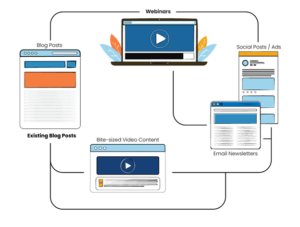Two of the tech industry’s essential front runners providing business intelligence solutions are Microsoft’s Power BI and Tableau. These leaders of data visualization help businesses narrow down and analyze their data with powerful built-in tools and clear visualizations. Each platform has distinctive strengths and weaknesses that should be considered before deciding on a business intelligence software.
Lower Cost: Power BI
 Microsoft Power BI Pro is only $9.99 per user per month for up to 10 GB of data capacity. Power BI Desktop, which is used to author Power BI content is free to download. Tableau Desktop is used to create Tableau content and it is $999 per user. Tableau also has a cloud server called Tableau Online, which is an additional $500 per year per user, that allows Tableau users to publish their content to an online environment.
Microsoft Power BI Pro is only $9.99 per user per month for up to 10 GB of data capacity. Power BI Desktop, which is used to author Power BI content is free to download. Tableau Desktop is used to create Tableau content and it is $999 per user. Tableau also has a cloud server called Tableau Online, which is an additional $500 per year per user, that allows Tableau users to publish their content to an online environment.
It is important to keep in mind that there are free versions of both: Power BI and Tableau Reader. However, the free version of Power BI is limited to only 1GB of data capacity and Tableau Reader doesn’t allow users to author any reports or dashboards on Tableau Server or Online.
Ease of Use: Tableau
The upside to the cost of Tableau is its ease of use. Tableau doesn’t require any special technical training to use. The interface is very intuitive and the drag-and-drop nature of Tableau calls for easy-to-customize dashboards. One of the most unique features of Tableau is the story-telling mode, which is a feature that can create a clean, slideshow presentation of all visuals. Power BI, on the other hand, requires a much deeper level of technical expertise. Power BI requires knowledge of a few different programming languages to operate. For example, simple calculations must be made with a language called Data Analysis Expressions, or DAX for short. DAX is a collection of functions, operators, and constants that can be used in an expression to calculate and return one or more values. Tableau still requires some knowledge of programming to import SQL Databases and calculate basic arithmetic functions, but for the most part, usage is very simple.
Power Options: Power BI
The complexity of Power BI is wonderful for those who know how to utilize its powerful functions and Excel power users. Both Power BI and Tableau can import from a wide-range of sources, but Power BI can take data to the next level. With 16 different chart types, Excel and Power BI plug-ins like PowerPivot and Power View, and over 20 new features released monthly, Power BI can take data connectivity and visualizations to a completely new level. Microsoft also hosts a custom visual gallery for
users to download templates for new visuals and a free Power BI Mobile App that scales visuals to a mobile screen – both of which are lacking in Tableau.
Summary
The right choice rests on business budgets, size of company, strategic vision and visualization preferences, among others. Power BI may be a better fit for a team of technical professionals with a tighter budget while companies with non-technical report delivery and fewer budget constraints can consider Tableau. Affirma is an award-winning business intelligence consulting firm specializing in both Power Bi and Tableau, and can provide solutions for any of your business challenges.




